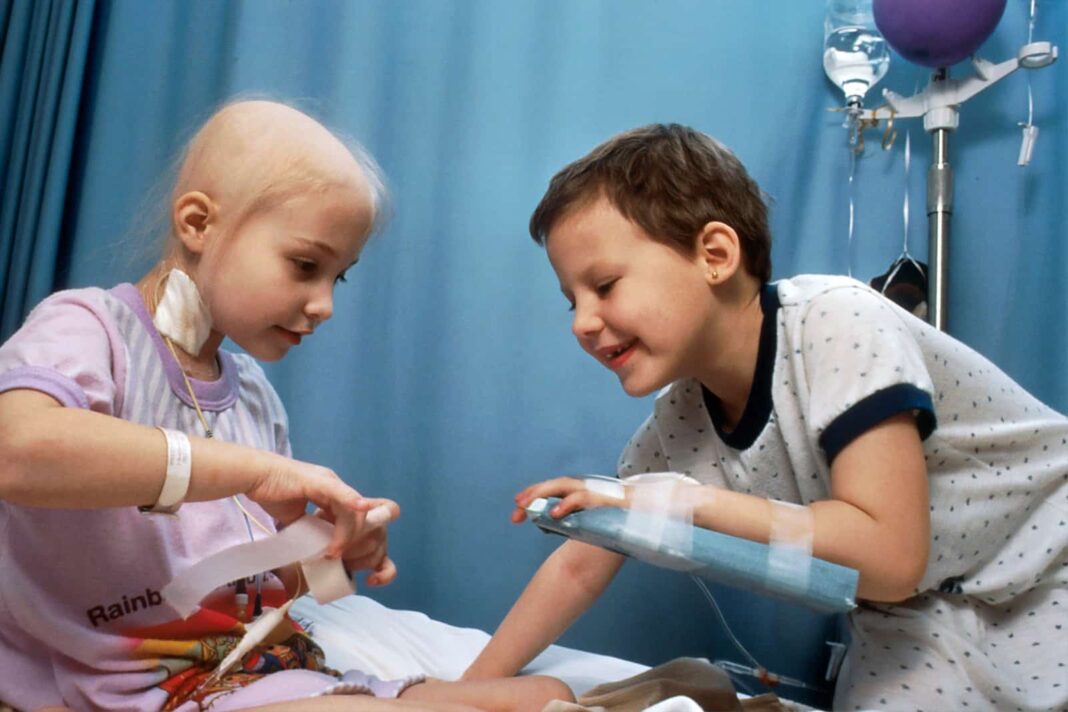On International Childhood Cancer Day, 15 February 2022, WHO/Europe launched the report “Childhood cancer inequalities in the WHO European Region”. This report sets out for the first time the evidence on childhood cancer inequalities in the Region, and examines the patterns that emerge at national and regional levels of childhood cancer incidence, patient and caregiver experiences, and short- and long-term outcomes for patients.
“The past few decades have seen enormous progress in childhood cancer survival, and today, we can cure up to 80% of childhood cancers thanks to innovative technologies, and improved diagnoses and treatment,” said Dr Nino Berdzuli, Director, Division of Country Health Programmes, WHO/Europe, at the launch of the report. “In high-income countries, cancer is not a death sentence for children and adolescents anymore. Unfortunately, this is not true across the WHO European Region.” In a rallying call to policy-makers, she urged: “It is extremely important that across the Region we work hard to reduce the gaps that still exist for childhood cancer care and treatment, so that every child with cancer gets the best chance at life”.
Unequal progress in childhood cancer survival
The report details how the 5-year overall survival rate for children with cancer increased from 30% in the 1960s to over 80% in recent times, a success that is attributed to different factors, including better medicines, diagnostics and access to care. The main message of the report, however, is that this progress has not been experienced equally across the Region, with a significant proportion of the thousands of children diagnosed with cancer annually still dying. “The mortality rate ranges from 9% in some countries in the Region to 57% in others. This stark difference represents a myriad of inequalities among our youngest vulnerable population across the Region, which we urgently need to address,” stated Marilys Corbex, Senior Technical Officer at WHO/Europe.
She added, “It’s important to note that, if differences in survival rates are significant between higher and lower income countries, they can also differ a lot within the same country across socioeconomic groups or even according to gender”.
Developed with many stakeholders from across the Region and beyond, the report looks at how children and families who experience childhood cancer are impacted by inequalities in different ways:
- inequalities between countries, for example between countries in eastern and western Europe, and all along the cancer care continuum, from early detection to treatment and palliative care;
- inequalities within countries and attributable to socioeconomic backgrounds, gender, age, geography (rural/urban) and other factors;
- a childhood cancer diagnosis can create or exacerbate inequalities and how difficulties for survivors can continue into adulthood affecting their long-term health, well-being, mental health and employment opportunities.
Collating the evidence
This groundbreaking report draws together available evidence and information from a wide range of published sources, including studies from the 53 Member States of the WHO European Region, from Iceland in the west to Kyrgyzstan in the east.
Of these states, 34 are considered high-income countries, 14 upper-middle income countries and 5 lower-middle income countries. The report features vignettes of the lived experiences of children with cancer and their families to illustrate the significant impact of inequalities on their care.
Examples of these stories include where clinics had insufficient medicines and parents had to source drugs themselves; where a lack of awareness of childhood cancer and knowledge of standardized cancer treatment protocols meant a missed, delayed or inaccurate diagnosis; where, due to a lack of paediatric facilities, children with cancer were treated in adult facilities; and where donations to organizations which provide medicines were affected by COVID-19 and families lacked the money to purchase medicines themselves.
A call to action
The report contains a list of suggestions and recommendations to help decision-makers respond to specific areas where gaps are known to exist. While recognizing that countries are working from different starting points and that different contextual factors will apply, the recommendations are targeted to have the greatest impact in reducing childhood cancer inequalities.
Key recommendations include:
- investing in data collection and analysis, as no decisions can be made without data;
- securing free of charge diagnosis and treatment to avoid catastrophic spending by families;
- funding professional training for doctors and nurses to ensure awareness and use of paediatric standardized treatment protocols for cancer;
- supporting survivors through Support Care Plans to deal with long-term effects;
- providing affected families with financial and social supports.
The launch brought together high-level policy-makers, along with advocates and experts, to present the case for an increased focus on addressing inequalities in childhood cancer within the European Region. WHO/Europe’s Cancer Ambassador, Aron Anderson, added his voice to the call for national policy-makers to recognize inequalities that affect children with cancer and their families, and to mobilize resources aimed at reducing those inequalities.
This report comes in the wake of an announcement in December 2021 by WHO and St. Jude Children’s Research Hospital of the establishment of a platform that will dramatically increase access to childhood cancer medicines around the world. Working across borders, sectors and disciplines, the Global Initiative for Childhood Cancer aims to improve outcomes for children with cancer worldwide.
This event is also a part of WHO/Europe’s United Action Against Cancer campaign launched in 2021, which is heavily focused on childhood cancer and ultimately aims to eliminate cancer as a life-threatening disease.
While there is much to celebrate in this report in terms of our understanding of how to tackle childhood cancers, the challenge now is to ensure that children across the Region benefit equally from those advances through a renewed focus on inequalities.









